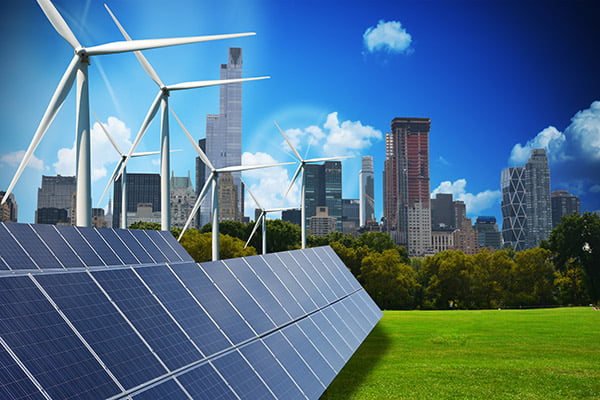Environmental consultancy
Sustainability is now table stakes
Sustainability has moved from a differentiator to table stakes and is now on everyone’s agenda: consumers and service providers.
In Europe, a massive majority of consumers expects sustainable products and services from their service providers and is willing to pay more for such an offer.
On the operator side, addressing these data center sustainability impacts could be an immense opportunity as the main benefits are market advantage & competitive positioning, the potential to set the standard in the industry and a future-proof and long term, efficient design.
BREEAM: The next step
The data center sector agrees that current industry standards do not adequately address wider sustainability impacts and that, besides operational energy management and efficiency, a number of other sustainability impacts need to be considered for data centres, such as use of renewable energy, waste heat reuse, water use, life cycle impacts etc…
BREEAM is one of those standards that addresses wider sustainability impacts. BREEAM is the world’s leading environmental assessment method for the built environment.
How to recreate balance in the data center ecosystem
The table below is a guidance to current unbalances found in today’s data centers and possible sustainable solutions.
DCONGREEN assists data center operators that are addressing unbalances in their data center by offering tailored consultancy, identifying and implementing the appropriate sustainability solutions.
earth
DC subsystems
- DC Building & Support structures
- Site location
Current unbalance
- Challenges with regards to available real estate due to high demand
- Land use (plot sizes > 100 ha) & site ecology
- “Black box” DC design & visual impact
- Conservative M&E designs & resource intensity
Possible solutions
- Brownfield sites or refurbished/redesigned buildings
- Modular, vertical builds
- Nature-inclusive design
- Functional adaptability of DC building & adaptation to climate change
air
DC subsystems
- Cooling system
Current unbalance
- Majority of data centers run at only 34% cooling capacity, still cooling accounts for 40% of total energy bill
- 15% of racks run outside of ASHRAE envelope, risk of SLA breach
- Massive cost of overcooling due to inefficient cooling practices and poor airflow management
- Waste heat rejected to environment
- Impact of cooling refrigerants
Possible solutions
- Cooling optimization to increase M&E capacity, cut cooling costs and reduce thermal risk
- Use highly granular sensor network to collect thermal, humidity and cooling duty data.
- Reuse & monetize waste heat for district heating or industrial processes
- Use ASHRAE allowable instead of recommended guidelines
- Liquid/immersive cooling
fire
DC subsystems
- Power
- Emergency Power (Generator, UPS)
- Fire detection & suppression
Current unbalance
- Electricity consumption of DC’s is 1-2% globally, strong growth expected with IoT, 5G and AI
- Pressure on local power infrastructure (> 100 MW for single projects)
- E-waste, e.g. batteries
- SO2, NOx and dust emissions of generator infrastructure, noise pollution
Possible solutions
- Energy monitoring, low carbon design and energy efficient equipment (eg UPS)
- Consider IT stack and server efficiency
- Renewable energy, consumption in proximity to generation
- Recycle/replace old batteries
- Fuel cells and green hydrogen
water
DC subsystems
- Cooling system (open loop)
- Water treatment installation
- Humification/dehumification
Current unbalance
- Water scarcity is a global problem and threat to future growth and operational reliability of a DC
- Water consumption in a DC is millions of liters per MW per year
- Still only very few (< 50%) report water usage data, let alone act on them
- Chemical water treatment
Possible solutions
- Monitor and reduce water consumption
- Water efficient equipment (high efficiency cooling modules)
- Use ASHRAE allowable instead of recommended guidelines
- Aquifer Thermal Energy Storage (ATES)
- Shared water challenge
- Investigate alternative water sources
- Immersive cooling
There is a link between all these elements and therefore it does not matter where you start. Addressing the unbalance in one element will automatically uplift the others and create a more balanced situation overall.
For example, replacing your diesel generator infrastructure by fuel cells, will address the unbalance in the “fire” element but also optimize the “water” element (as part of the hydrogen electrolysis, water is created as a by-product) and “earth” element (smaller foot print). Similarly, a cooling optimization solution will initially address the “air” and/or “water” elements but also benefit the “earth” (by improved capacity management & footprint impact) and “fire” element (lower power consumption)

